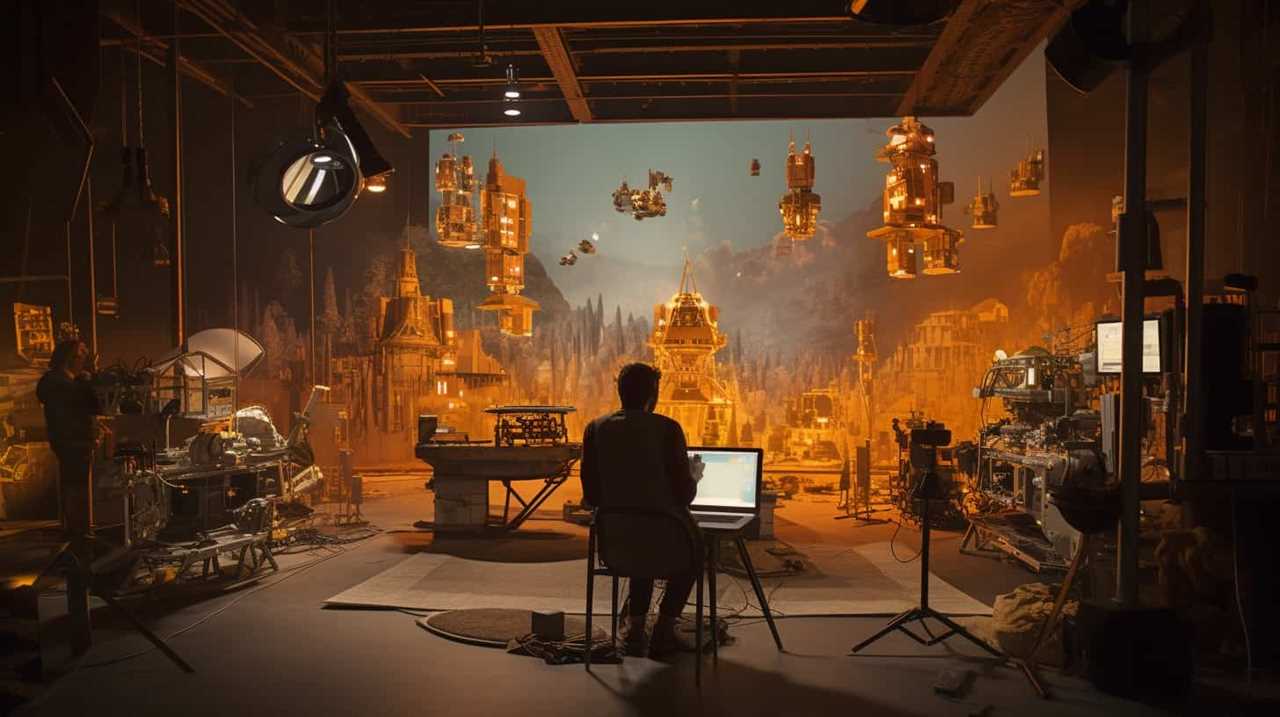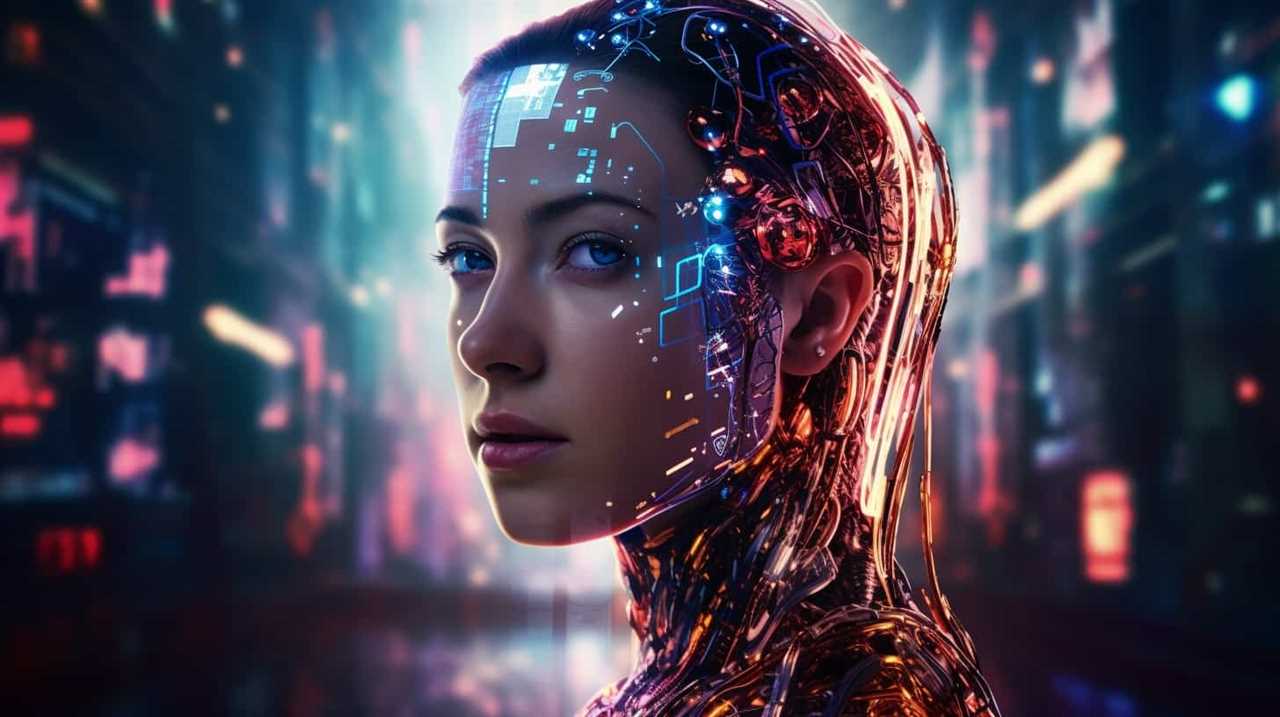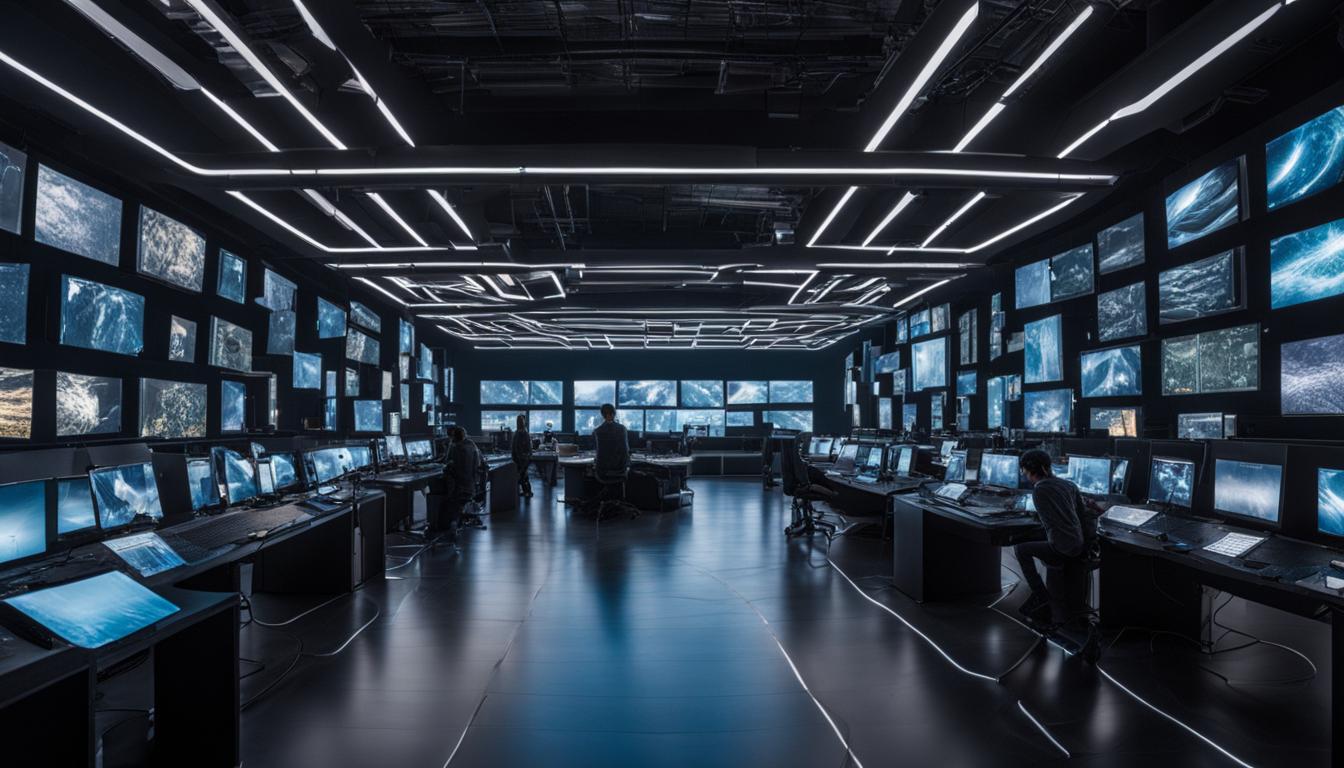Experience a world where virtual reality gaming reaches new levels of excitement. Through the use of generative AI, we take your gaming experience to unmatched heights.
Get ready to be immersed in enhanced graphics that will make you question what is real and what is not. Prepare for personalized gameplay experiences tailored specifically to your preferences.
Witness the power of real-time content generation, AI-powered NPCs, and enemies that adapt and challenge you in ways you never thought possible.
Welcome to the future of gaming, where freedom knows no bounds.

Key Takeaways
- Enhanced immersion and engagement: Generative AI can incorporate realistic physics simulation and interactive virtual environments, creating lifelike worlds that respond to player’s actions. This technology allows players to interact with objects and environments in a natural and authentic way, blurring the lines between virtual and reality.
- Evolving game world: Generative AI enables the constant evolution of the game world, pushing players to their limits and providing an immersive and exhilarating experience. The unpredictable and surprising gameplay moments add to the sense of realism and authenticity.
- Personalized experiences: With generative AI, games can generate challenges based on the player’s gaming patterns, preferences, and skill level. The difficulty levels dynamically adjust based on the player’s performance and progression, providing a unique and fulfilling experience tailored to individual preferences and behavior.
- Increased replayability: Procedural generation and AI-generated environments create endless possibilities and variations in gameplay. The game world can constantly evolve and adapt to provide new and exciting challenges, enhancing replayability and encouraging exploration.
Enhanced Graphics and Immersion
We can truly amp up the graphics and immersion in virtual reality gaming by harnessing the power of generative AI. By incorporating realistic physics simulation and interactive virtual environments, we can take gaming experiences to the next level.
Generative AI algorithms have the ability to generate lifelike virtual worlds that respond to the player’s actions, creating a more immersive and dynamic experience. With realistic physics simulation, players can interact with objects and environments in a way that feels natural and authentic.
Imagine being able to feel the impact of a punch in a virtual boxing match or the sensation of wind rushing past you as you navigate a virtual race track. Generative AI opens up a world of possibilities for creating hyper-realistic gaming experiences that blur the lines between virtual and reality.
Personalized Gameplay Experiences
To further enhance virtual reality gaming, generative AI allows us to create personalized gameplay experiences that cater to each individual player’s preferences and skill level. With customized challenges and adaptive difficulty levels, players can now enjoy a gaming experience that’s tailored specifically for them.

-
Customized challenges: Generative AI analyzes the player’s gaming patterns, preferences, and skill level to generate challenges that align with their abilities and interests. This ensures that players are constantly challenged and engaged, without feeling overwhelmed or bored.
-
Adaptive difficulty levels: Gone are the days of one-size-fits-all difficulty settings. Generative AI dynamically adjusts the difficulty of the game based on the player’s performance and skill progression. This ensures that players are always facing a suitable level of challenge, allowing them to continually improve and stay motivated.
-
Freedom of choice: With personalized gameplay experiences, players have the freedom to explore different paths and playstyles within the game. They can choose to focus on their preferred game mechanics, characters, or strategies, making each playthrough a unique and fulfilling experience.
Real-time Content Generation
With real-time content generation, our virtual reality gaming experiences are constantly evolving and adapting to provide players with new and exciting challenges. Procedural generation, powered by AI, plays a crucial role in this process by dynamically creating and modifying game content in real-time.

AI generated environments enable an infinite variety of game worlds, ensuring that no two gameplay experiences are ever the same. By leveraging the power of generative AI, developers can create vast and immersive gaming environments that respond to player actions and preferences. This not only enhances replayability but also allows for a greater sense of freedom and exploration within the virtual world.
Real-time content generation opens up new possibilities for creating truly personalized and engaging gameplay experiences, making virtual reality gaming an even more thrilling and unpredictable adventure.
AI-powered NPCs and Enemies
AI-generated NPCs and enemies add a dynamic and challenging element to virtual reality gaming experiences, keeping players engaged and on their toes. These AI controlled adversaries bring life to the virtual world, creating interactive virtual environments that respond intelligently to player actions.
Here are three ways AI-powered NPCs and enemies enhance the gaming experience:

-
Adaptive Behavior: AI algorithms enable NPCs and enemies to adapt their behavior based on player interactions, making each encounter unique and unpredictable.
-
Realistic Reactions: AI-powered adversaries can simulate human-like reactions, allowing them to respond dynamically to the player’s actions and create a more immersive gaming experience.
-
Intelligent Decision-Making: AI-controlled NPCs and enemies can analyze the virtual environment, assess their own capabilities, and make strategic decisions that challenge the player’s skills.
With the integration of AI-powered NPCs and enemies, virtual reality gaming becomes an interactive and thrilling adventure.

Now, let’s explore how dynamic game world adaptation further enhances this immersive experience.
Dynamic Game World Adaptation
One key aspect of dynamic game world adaptation is the ability for virtual reality environments to seamlessly evolve and respond to player actions. This process involves the continuous evolution of the game world and the challenges it presents to the player.
Through generative AI, the game world can adapt in real-time, providing unique and tailored experiences for each player. Game world evolution allows for a dynamic and ever-changing environment, ensuring that players are constantly faced with new and adaptive challenges.
This level of adaptability not only enhances the player’s immersion and engagement but also provides a sense of freedom and agency within the game. As players navigate through the evolving game world, they’re constantly tested and pushed to their limits, creating a truly immersive and exhilarating experience.

Frequently Asked Questions
How Does Generative AI Improve the Graphics and Immersion in Virtual Reality Gaming?
Generative AI revolutionizes virtual reality gaming by enhancing graphics and immersion. It’s like injecting a powerful elixir into the virtual world, breathing life into pixels and transporting us to unimaginable realms.
Can Generative AI Be Used to Create Personalized Gameplay Experiences for Each Player?
Generative AI can revolutionize virtual reality gaming by creating personalized gameplay experiences for each player. By harnessing the power of AI, we can generate unique virtual environments that cater to individual preferences, enhancing immersion and freedom in the gaming experience.
What Is Real-Time Content Generation in Virtual Reality Gaming and How Does Generative AI Contribute to It?
Real-time content generation in VR gaming is the ability to dynamically create game elements on the fly. Generative AI enhances this by using algorithms to generate personalized gameplay experiences in real time, making VR gaming more immersive and engaging.
How Does Ai-Powered NPCs and Enemies Enhance the Overall Gaming Experience in Virtual Reality?
AI-powered NPCs and enemies in virtual reality gaming enhance the overall gaming experience and interaction. They create unpredictable and dynamic gameplay scenarios through real-time AI-generated challenges, adding a new level of excitement and freedom to the gaming world.

What Is Dynamic Game World Adaptation and How Does Generative AI Play a Role in It?
Dynamic game world adaptation is like a symphony that adjusts to our every move, creating an immersive experience. Generative AI orchestrates this harmony, exploring its potential in virtual reality gaming and unlocking new levels of freedom and innovation.
Conclusion
In the realm of virtual reality gaming, the integration of generative AI has revolutionized the experience. By harnessing the power of AI, graphics have been enhanced to new levels, immersing players in incredibly realistic and captivating virtual worlds.
Personalized gameplay experiences have become the norm, adapting to each player’s unique preferences and skill level. Real-time content generation ensures that the game is always fresh and exciting, while AI-powered NPCs and enemies provide intelligent and challenging opponents.
The dynamic adaptation of the game world creates a truly innovative and unparalleled gaming experience.












